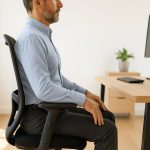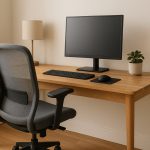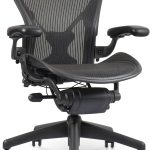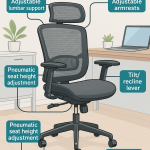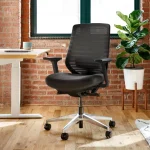If your lower back aches after hours at your desk, you’re not alone. Poor sitting posture and unsupportive chairs are among the top causes of chronic back pain in office workers. The good news? You don’t need expensive therapy—just the right chair setup and posture habits.
In this guide, we’ll explain why ergonomic chairs help lower back pain, the science behind spinal support, and simple ways to sit correctly so your back feels better—day after day.
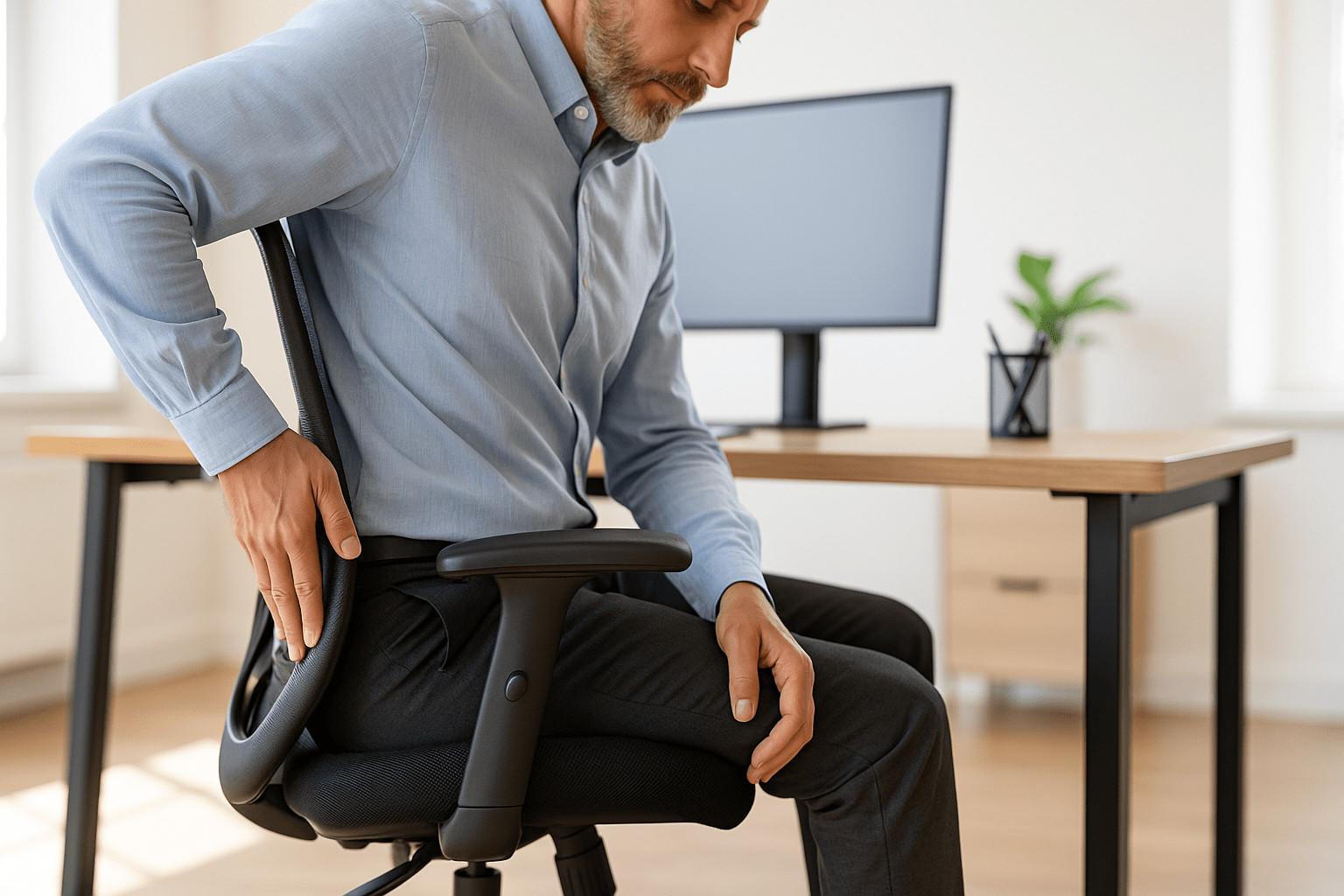
Why Does Sitting Cause Back Pain?
Sitting for long hours increases pressure on your spine, especially the lumbar discs. When posture collapses—rounded shoulders, tucked pelvis, and inactive core—stress builds up in the lower back.
Key reasons:
- Static sitting reduces blood flow to spinal tissues.
- Weak or slouched posture compresses vertebrae.
- Poor seat design fails to support lumbar curvature.
Ergonomic chairs relieve lower back pain by supporting the spine’s natural curve, keeping hips level, and promoting active posture that reduces disc pressure.
How Ergonomic Chairs Support the Spine
An ergonomic chair isn’t just about comfort—it’s about biomechanics. Here’s how it works:
1. Lumbar Support Fills the Natural Curve
Good chairs match the inward curve of your lower back. This alignment prevents the pelvis from tilting backward, maintaining a neutral spine.
Example: The Hbada E3 Ergonomic Chair features adjustable lumbar tension for tailored support.
Disclosure: As an Amazon Associate, we earn from qualifying purchases.
2. Adjustable Seat Depth Reduces Thigh Pressure
When the seat pan fits your leg length, it encourages circulation and prevents slumping forward. Ideally, leave a 2-inch gap between the seat edge and knees.
3. Recline Mechanism Distributes Pressure
A 100–110° recline angle shifts weight from the lumbar spine to the chair’s backrest. Even short recline breaks every hour can ease tension buildup.
4. Armrests Relieve Shoulder Load
Proper armrest height keeps elbows near 90°, preventing neck and upper back strain.
Correct Sitting Posture for Back Pain Relief
Step-by-Step Sitting Technique
- Sit with your hips fully back in the chair.
- Keep feet flat or on a footrest.
- Maintain knees at or slightly below hip level.
- Align shoulders with ears; avoid leaning forward.
- Rest elbows close to your sides and forearms parallel to the desk.
Quick Fixes You Can Do Right Now
- Add a rolled towel to mimic lumbar support.
- Raise your monitor to eye level to reduce hunching.
- Stretch hip flexors and hamstrings to offset tightness.
Extra Ergonomic Habits for Pain Prevention
| Habit | Why It Helps |
|---|---|
| Take microbreaks (1–2 min/hr) | Restores spinal hydration and circulation |
| Switch positions | Reduces static muscle fatigue |
| Use dynamic sitting (slight movement) | Engages stabilizing muscles |
| Practice core activation | Supports upright posture naturally |
When to Replace Your Chair
Even the best ergonomic chairs lose effectiveness over time.
Replace or service your chair if:
- The lumbar pad feels flat or uneven.
- Cushioning compresses easily.
- The gas lift fails to hold consistent height.
- You notice pain even with correct posture.
(Most chairs last 5–7 years depending on use.)
Next Steps
If your lower back still feels tight after sitting, revisit your chair setup and habits. Every small correction helps your posture recover.
To go further:
- Explore our complete guide on ergonomic chairs for back pain — find posture techniques and chair types that actually help.
- Learn how to adjust your office chair for perfect posture — follow practical, expert-backed steps.
- Set up your ergonomic workspace on a budget — discover affordable changes that improve comfort fast.
Conclusion — Sit Smarter, Feel Stronger
Lower back pain isn’t an inevitable part of office life. With the right chair and posture, you can turn your workspace into a place that supports—not strains—your body.
Small daily adjustments compound into lasting relief. Think of your ergonomic chair as part of your health investment, not just office furniture. Sit smarter, move often, and your back will reward you with energy and comfort for years to come.
FAQs
Yes. They maintain spinal alignment and reduce pressure on the lumbar discs, which can ease chronic pain.
A recline angle of 100–110° with proper lumbar support is ideal.
Yes—use a rolled towel or cushion for support, adjust your screen height, and take standing breaks.

